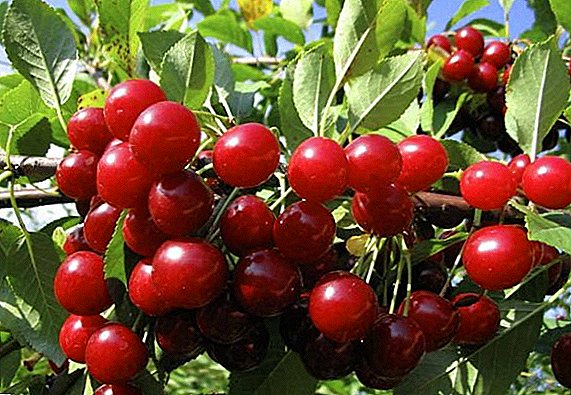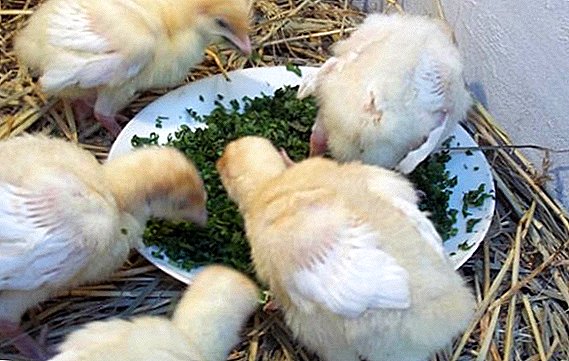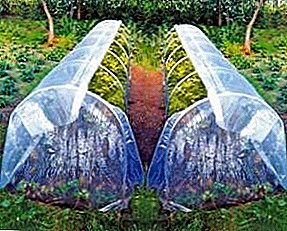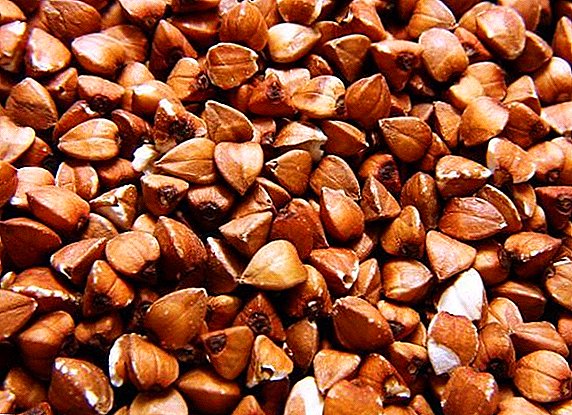 What is buckwheat, they know even those who are not associated with agriculture in their professional activities. It is not surprising, because it is the most important crop of the food industry, from the grain which produces cereals and flour. In addition, it is a good predecessor for many crops.
What is buckwheat, they know even those who are not associated with agriculture in their professional activities. It is not surprising, because it is the most important crop of the food industry, from the grain which produces cereals and flour. In addition, it is a good predecessor for many crops.
Vitamin PP is obtained from the leaves and flowers of the crop, and the waste from the processing of the plant — flour, straw, husk, grain — is used as feed for livestock. In eastern countries, the husk of the grain culture is used for the production of pillows. The plant, in addition, has value as a honey plant: from 1 ha of crops you can get about 100 kg of honey and even more.
The homeland of buckwheat is East and Southeast Asia. The plant was introduced to the crop about 4 thousand years ago, in the mountains of India and Nepal, where it is called "black rice". It belongs to the Grechishny family and is represented by several species, the most important of which for agriculture is buckwheat. It is divided into two subspecies: the many-leaved and ordinary. The main importance for the food industry is ordinary.
Did you know? Buckwheat culture was called Slavs after it was brought to them from Byzantium in the VII century. According to another version, the name “buckwheat” appeared because for many years the culture was cultivated mainly by Greek monks at monasteries. Now in the European countries, buckwheat is called "beech wheat because of the similarity of its seeds with beech nuts. Hence the name of the genus in Latin: Fagopyrum -" bukovidny nutlet. "This article describes the agricultural varieties of buckwheat, the most common in the cultivation for the food industry.
Diploid varieties of buckwheat
In buckwheat diploid and tetraploid varieties are zoned. Differences between them are that diploid ones contain 16 chromosomes, and tetraploid ones - 32.
In order to ensure a good harvest, regardless of weather conditions and other external factors, as a rule, at least two or three varieties of buckwheat are sown at one site.
Important! Buckwheat can not be sown on areas where herbicides have been applied to previous crops.
"Vlada"

Buckwheat cultivar "Vlada" is a diploid erect plant, a ribbed stem of which reaches a height of more than 1 meter. The leaves are heart-triangular, green in color, have a slight pubescence, go to the arrowhead, sessile to the top of the stem. Raceme, inflorescences, small flowers, pale pink color.
The fruit is trihedral, elongated, dark brown. The main differences are stem-aligned, good branching, flowering fruit ripening, as well as resistance to shedding seeds and lodging. Sowing should be carried out at an early date, avoiding delays, since this leads to a loss of the future crop.
The average yield is 16.5 c / ha, the maximum recorded among the CIS countries - 28.1 c / ha (2007). The vegetation period of the plant is about 83 days. Belong to the valuable technological and cereal qualities. Indicators of evenness of buckwheat grain of this variety are 90.4%; cereal yield - 75.6%; cereal kernel - 61.8%. The taste of porridge is estimated at 5 points.
"Dikul"

The buckwheat variety "Dikul" has morphological characteristics similar to the "Vlad" variety. Stem short, reaches a height of 70-95 cm, light green color, with weak pubescence. The leaves are small, triangular-heart-shaped, green, have weak pubescence. Inflorescence racemose or corymbose, flowers white and pink.
The fruit is medium, elongated, brown. Variety - mid-season, its growing season lasts about 80 days. "Dikul" is considered a species with good yields. The average is 16.1 centners per hectare, and the maximum is 25.8 centners per hectare (2003). Differs in high technological and groats qualities. The index of grain evenness is 75%; cereal yield - 70%, cereal kernel - 53%. The taste of porridge is estimated at 5 points.
"Rain"

Variety of buckwheat "Rain" is characterized by the presence of a single brush instead of corymbose, which is located at the top of the shoot. The inflorescence is large, reaches a length of 7 cm, not a lot of flowers. The plants have a well-developed main shoot, which has about 4-6 knots.
For buckwheat, some of the best predecessors will be: potatoes, lupins, datur. Buckwheat itself will be an excellent predecessor for: oats, sugar beets and potatoes.
The variety is large-fruited, mid-season, and is resistant to lodging. The growing season lasts up to 70-80 days. Grain yield - 73%, protein content - 16.3%. The maximum yield of buckwheat "Rain" - 27.3 c / ha (1991). Matures well, suitable for direct harvesting combine. The highest yield yields on fertile soils.
"Carmen"

Buckwheat varieties "Carmen" - another representative of diploid varieties, determinant, upright plant. It has a hollow stem with weak pubescence, reaching an average height of 86 cm. The leaves are green, heart-shaped and triangular in shape, to the top of the stem are arrow-shaped, sessile, with a weak waxy coating and without pubescence.
Inflorescence dense, racemose, located on long peduncles. The flower is a pale pink color, small. The fruit is trihedral, has a diamond shape, dark brown color. Average yield - 17.3 c / ha; maximum recorded - 24.7 c / ha (2003). The growing season is about 79 days.
The yield of cereal - 67.7%, cereal kernel - 65%, the taste of cereal is estimated at 5 points. It is characterized by vertically standing stems, good branching, flowering and fruit ripening. The best way to clean - two-phase.
"Klimovka"

Buckwheat variety "Klimovka" is mid-season, resistant to lodging and is characterized by large fruits (grain). The growing season lasts 79 days. The height of the stem is 98 cm. The yield of buckwheat of this variety is rather high, the average indicator is 17.4 centners per hectare. The best predecessors for Klimovka are leguminous crops, fertilized winter and annual grasses.
"Sapphire"

The plants have a hollow articulated ribbed stem, reaching a height of not more than 75 cm. The leaves are medium in size, green in color, in a heart-triangular shape, turning into sessile, wavy, without pubescence and waxy coating. Racemose inflorescence, on a long peduncle, small-sized flower, white-pink.
The fruit is trihedral, diamond-shaped, brown. Sowing buckwheat of this variety should be carried out in the first - second decade of May, excluding delay, as this leads to yield loss. Differs in good flowering and ripening of grain. Sredne-unstable to shedding seeds and lodging.
Buckwheat "Sapphire" gives an excellent yield, the average indicator is 22.5 c / ha; the maximum is 42.6 centners per hectare (2008). The growing season lasts about 86 days. "Sapphire" in quality refers to the valuable varieties and is distinguished by good technological and cereal qualities. The grain is large, the index of evenness is high - 91%. The output of cereals is 73.3%, cereal kernels - 56.7%. The taste of porridge is estimated at 5 points, croup contains 14.5% protein.
"Darkie"

The variety of buckwheat "Darkie" has an erect ribbed hollow stem, which ends with a single brush. The plant reaches a height of 72 to 102 cm. The leaves are single-cut, heart-triangular, green, without wax and pubescence.
Racemes, sit on long peduncles of 8-14 in a brush. Flowers of pale pink color, grain trihedral, naked, diamond-shaped, black and chocolate color. The plant has an average yield, up to 14.3 c / ha.
"Aronia"

"Black" buckwheat is bred from the variety "Yubileinaya-2" by the method of individual selection. This is a ripening variety, its growing season is not more than 75 days. The stems of plants are tall, about 100 cm tall, have good branching. Blossom is good, friendly, white flowers.
Buckwheat fruit "Chokeberry "medium-sized, black, contains from 14 to 17% protein. It has good technological and grain quality, the output of cereals is high - up to 77%. The plant is moderately resistant to lodging. With proper compliance with agrotechnical recommendations gives a high yield on any soil in almost all climatic zones.
Tetraploid buckwheat varieties
Tetraploids of buckwheat are characterized by increased yield, large graininess, high protein content in fruits, have weak rechargeability and fallability. Consider which varieties are tetraploid.
Alexandrina

Buckwheat cultivars "Alexandrina" have a hollow ribbed stem that reaches an average height of 89 cm. The leaves are green, heart-shaped, arrow-shaped, passing into sessile, have no pubescence and waxy deposits. Inflorescence is corymbose, located on long peduncles, flowers are large, pale pink. The fruit is elongated, triangular, dark brown. The average yield of the variety Alexandrina is 18.1 c / ha; the maximum is 32.7 centners per hectare (2004).
The vegetation period lasts 87 days. Technological and cereal characteristics are high. The yield of cereal - 68.2%, cereal kernel - 63.7%. Recommended early cultivation of buckwheat of this variety, sowing time no later than the first decade of May. When cultivating, it is required to isolate from diploid crops. The best way to clean - two-phase. It features friendly flowering and good ripening of grain, moderately resistant to shedding of grain and lodging.
"Bolshevik-4"

Variety "Bolshevik-4" is characterized by a powerful, high stem, reaching 1 meter. The grain is large and leveled (91-100%), characterized by high technological qualities. Before the breaking of the grain does not require re-separation into fractions, which provides a good yield of cereals - up to 86%.
The taste of porridge is estimated at 5 points, the protein content in the grains is quite high - 15-16%. The average yield - 19.1 c / ha, the maximum - 32.2 c / ha was recorded in 2008. "Bolshevik-4" mid-season, the growing season lasts from 68 to 78 days. Differs in the increased resistance to frosts, lodging and fall of grain.
"Or me"

Sort "Elijah" - a plant of upright type, has a ribbed hollow stem. The leaves are heart-triangular, green, turning into a sessile arrow-shaped, without wax and pubescence. Racemes inflorescences, large flowers, light pink. The grain is large, diamond-shaped, trihedral, dark brown.
The average yield is 17.1 centners per hectare, the maximum is 33.2 (1997). The output of cereals -73-74%. The plant is moderately resistant to lodging and shattering, characterized by good flowering and ripening. The best way to clean - separate. The best yield is on medium loamy and light soils, with wide-row sowing, with a seeding rate of buckwheat 1.2 million pcs / ha.
"Lena"

Buckwheat variety "Lena" is a tetraploid determinant plant of upright type. It has a durable ribbed hollow stem, reaching a height of 95 cm, light green color. The leaves are green, wavy, heart-triangular, without pubescence. Inflorescences dense, racemes, on long peduncles, white-pink flowers.
The fruit is rhombic, large, triangular, brown. The variety is mid-season; the growing season lasts 88 days. The average grain yield is 13.8 c / ha; the maximum is 25.5 centners per hectare (2003). Technological and grain indicators are high, grain evenness is excellent - 99%. The yield of cereal - 72%, cereal kernel - 55%.
The taste of porridge is estimated at 5 points. Early seeding in the first or second decade of May is recommended for this species. The best way to clean - two-phase.
"Martha"

Martha is one of the representatives of the new tetraploid buckwheat varieties. The plant is indeterminate, erect, the stem is hollow, ribbed, reaches 1 m in height. The leaves are medium, green, heart-shaped, triangular, wavy, without pubescence and wax coating. The inflorescence is raceme, flower large, pale pink color.
The fruit is trihedral, diamond-shaped, dark brown. The average yield is 19.1 centners per hectare, the maximum yield is 35.7 centners per hectare (2008). The vegetation period is long - 94 days. The variety is valuable, has high technological and cereal qualities.
Buckwheat is often attacked by such pests: Cockchafer, mice, wireworms and nematodes.
The grain is large, the evenness index is high - 97.9%, the output of cereal is 72%, the cereal kernel is 74.8%. The taste of porridge is estimated at 5 points, the protein content is 14%. It is also recommended early sowing, avoiding delay, so as not to lose in the amount of the crop. When cultivating, it should be isolated from diploid varieties.
"Minsk"

The buckwheat variety "Minskaya" was bred by the method of multiple selection of highly productive specimens and offspring of the "Istra" variety. Plants "Minsk" tall, characterized by good branching. Flowers are large, white. The grain is large.
The average yield is 12.3 -25.4 q / ha. The plant is mid-season; the vegetative period lasts from 79 to 90 days. It has high technological and grain quality, cereal yield - 73%, protein content - 16.8%. Well blooms and matures, resistant to lodging.












